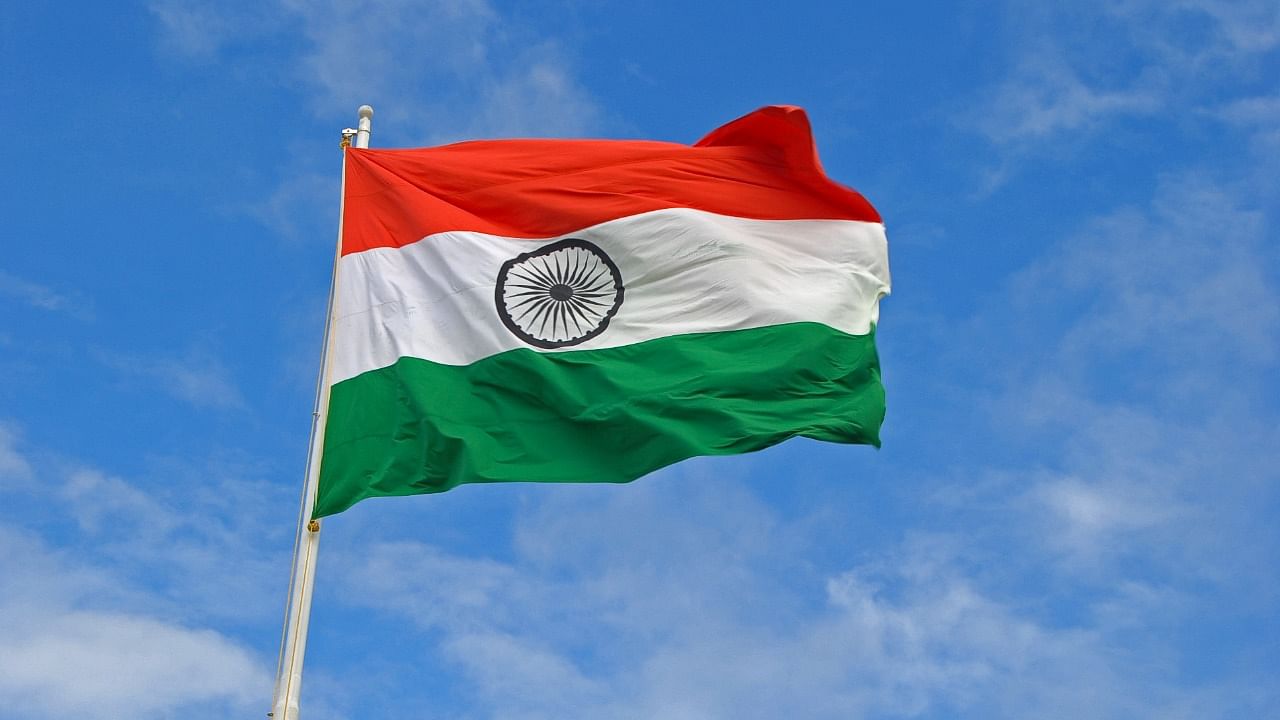
When Kamla Hiranand died in Mumbai in 2010, the freedom fighter's body was draped in the national flag, as she had wanted. The Gandhian community reformer, who'd spent her life in and out of Sindh's jails, had never worn anything but khadi, even getting married in a sari spun by her uncle, Acharya Kripalani.
There must have been thousands of Kamla Hiranands across the country till some years back. Mumbai can still boast of one: 98-year-old Dr GG Parikh, founder of the Yusuf Meherally Centre, last seen at a demonstration protesting Teesta Setalvad's arrest.
No one was surprised at his presence, for that's what khadi-wearers do. Cataracts in both eyes didn't prevent the late Dinkar Sakrikar, a Lohiaite journalist in Mumbai, from not just participating in a protest march during the Namantar movement (to name Marathwada University after Dr BR Ambedkar) but also spending a week in Thane jail for this. Comparing this experience with his stints in jail as a student organiser in the Quit India movement, he advised young people to go to jail at least once.
It goes without saying that Sakrikar only wore khadi.
Then there's Daniel Mazgaonkar, Sarvodaya activist, jailed during the Emergency. In 2017, aged 81, he was spotted in his familiar khadi kurta-khadi jhola at the #NotInMyName morcha against the lynchings of Muslims that had become a feature of the Modi era. Marching alongside him was the khadi-clad filmmaker Anand Patwardhan, whose documentaries have always won National Awards but who's always had to get courts to force Doordarshan to air them, given their political content.
Khadi remains the trademark of activists across the country, including Medha Patkar and Himanshu Kumar, heirs to the legacy of Gandhi, Lohia, Jayaprakash Narayan and Vinoba Bhave.
Those of us privileged to have grown up around this dying generation, are ourselves on the wrong side of 60. For us, khadi is not just a fabric but holds within it innumerable memories. Stories of women lying down on scorching tar roads in front of trucks carrying foreign cloth and liquor during the Swadeshi movement; stories about back-breaking days in jail spent cleaning wheat during the Quit India movement; about printing presses being confiscated and newspapers being brought out by hand; about gold bangles being impulsively given away when Gandhiji asked for donations; songs of the freedom movement which were, for some reason, never taught in school.
The khadi wearers who recounted these stories brought alive the freedom movement in a way school textbooks never could. Since it seemed natural to them to continue wearing khadi even years after Independence, Khadi Bhandars became an integral part of our childhood. In its heyday, the one in Mumbai was indeed a magical place: each counter offered a different khadi item, a fascinating collection of handicrafts, including toys seen nowhere else. And, of course, the counter where you could get the national flag in all sizes.
It was sad enough to see the decline of Khadi Bhandars over the years, as khadi wearers started fading away. But who could have imagined the tricolour in any material but khadi? It's obvious that those in power who decided to change the Flag Code to allow polyester flags must not have even the remotest connection to the freedom movement. Forget connection, for that can be a matter of luck; those behind this decision don't seem to feel even basic pride in our Independence struggle. There can be no other explanation for treating khadi as just another fabric and not one of the defining symbols of our unique freedom movement. Are the khadi-wearing BJP allies going to say nothing?
Soon after this announcement, a news item tucked away in the inside pages reported that this change in the Flag Code had already spelt doom for hundreds of women in Karnataka's Bengeri village. Employees of the country's only BIS-authorised flag-making unit, they described their job as "sacred". They'd hoped the "azaadi ka amrit mahotsav" would make up for the two bleak pandemic years; instead, orders had fallen so drastically after the announcement that the unit itself faced possible closure.
Self-reliance was the reason khadi was introduced in the freedom struggle. Machine-made polyester is its antithesis. The BJP knows this. Yet, it changed the Flag Code and then brazenly claimed it was doing so to help people celebrate the 75th year of Independence! But why be surprised at this decision that negates the essence of the freedom struggle? After all, it comes from a party that never participated in that struggle. Let its followers wave their polyester flags; leave the khadi flag to the rest of us.
(Jyoti Punwani is a journalist)
Disclaimer: The views expressed above are the author's own. They do not necessarily reflect the views of DH.